Gallery Network
How Folk Artist Maud Lewis Became a Fixture in Canadian Art History
Explore the life and work of Lewis with Oeno Gallery, helping to spearhead the artist's resurgence.
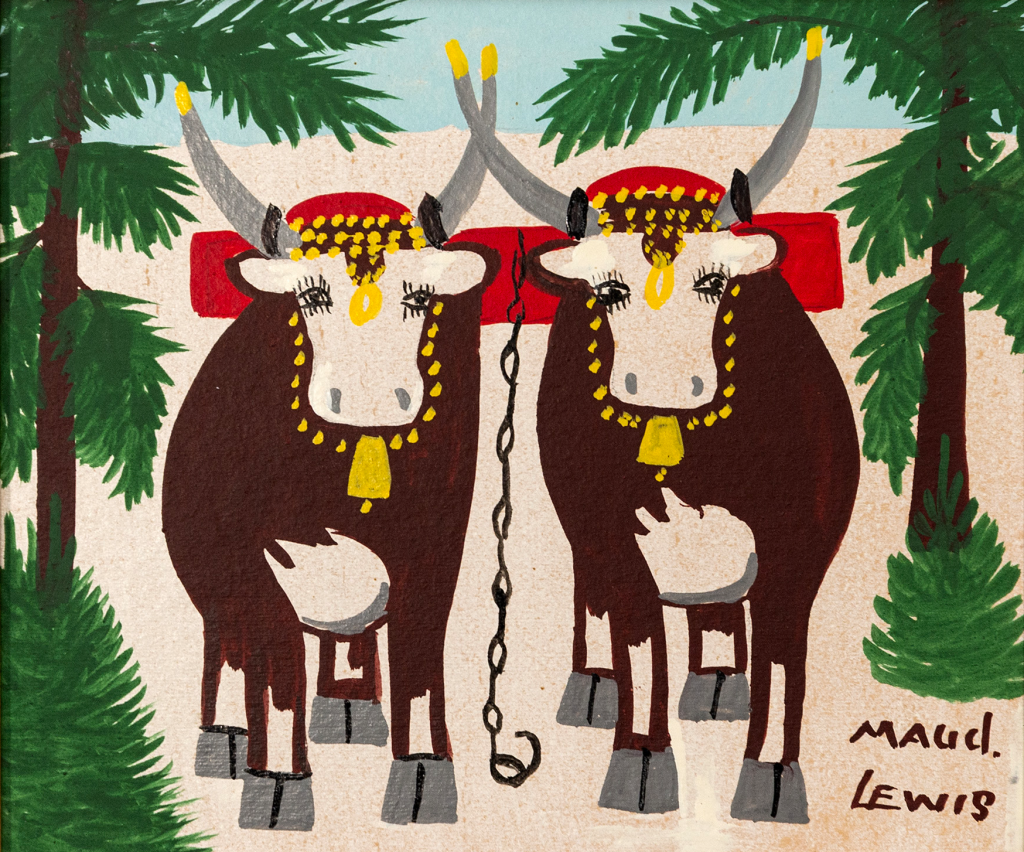
Explore the life and work of Lewis with Oeno Gallery, helping to spearhead the artist's resurgence.

Artnet Gallery Network

Over the past several years, the work of Canadian folk artist Maud Lewis has been garnering increased attention and praise. An icon of 20th-century Canadian art, interest in Lewis was propelled in 2016 with the release of the biopic Maudie staring Sally Hawkins and Ethan Hawke, which traced her life and practice. Subsequently, Lewis’s auction record was set in 2022 at Miller and Miller Auctions at $350,000 for Black Truck (ca. 1960s)—a painting that had been traded for a few grilled cheese sandwiches by a former owner.
Lewis, née Dowley, was born in Nova Scotia in 1903, and though her childhood was spent in relative comfort, she ultimately spent most of her adult life in poverty. At the age of 34, she married Everett Lewis, and they settled in a small house that she would go on to use as her studio. To make extra money, Lewis began selling Christmas cards door-to-door alongside her husband who peddled fish. The popularity of these cards ultimately inspired her to expand her practice to include oil painting, which she created on affordable yet more substantial materials such as beaverboard, cookie sheets, and Masonite. Her paintings frequently spilled off her supports, and the interior of their home became saturated with her work.
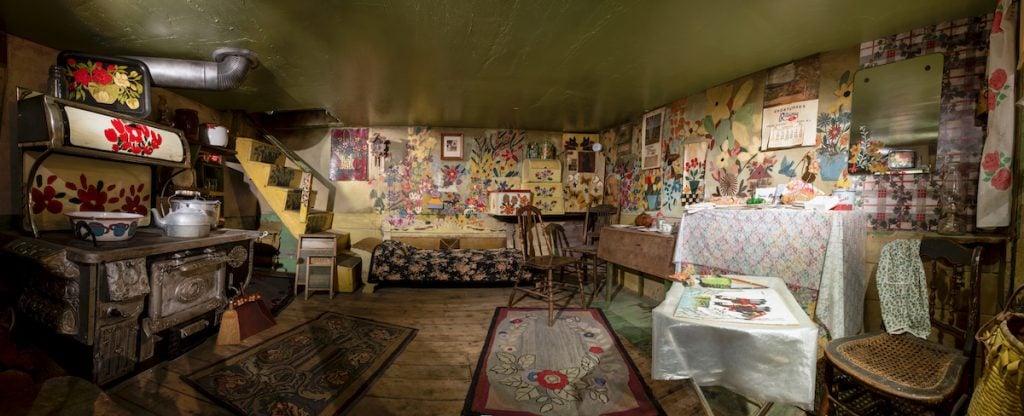
Maud Lewis House. Photo: Steve Farmer. Courtesy of the Art Gallery of Nova Scotia.
Following her death in 1970, her legacy faltered, however, in 1998 the Art Gallery of Nova Scotia placed the small house she worked from on permanent view, and her work has become a cherished facet of Canadian art history. Oeno Gallery has been a fixture of the Toronto arts landscape since 2003 and has maintained a reputation as a purveyor of both contemporary and historical fine art by a range of mid-career and established artists. For more than eight years, Oeno Gallery has specialized in Lewis’s oeuvre, and has been a leader in acquiring her work and helping clients to do the same. On the occasion of the gallery’s 20th anniversary, it was revealed that Lewis has been the leader within their secondary market sales.
Speaking of the artist and her legacy, Oeno Gallery Managing Director Dana Charles said, “Maud had a unique painting habit, regardless of the weather or her surroundings and likely being limited to four small walls of her cabin, she invented a joyous way of incorporating the brilliant colors and light that comes with all seasonality. This was coined in her ‘four seasons all at once’ paintings. You’ll find paintings with skiers barreling down a snowy hill, surrounded with green palm or yellow, orange, and red fall-colored maple trees, and in the distance, colorful barns with grass and pink tulips sprouting around them.”
Lewis’s unique aesthetic sensibility and vibrant color palette has continued to capture the mind and imagination of collectors and art enthusiasts alike, and as her work and legacy continue to grow and disseminate, her place within the art historical canon will only be further solidified.
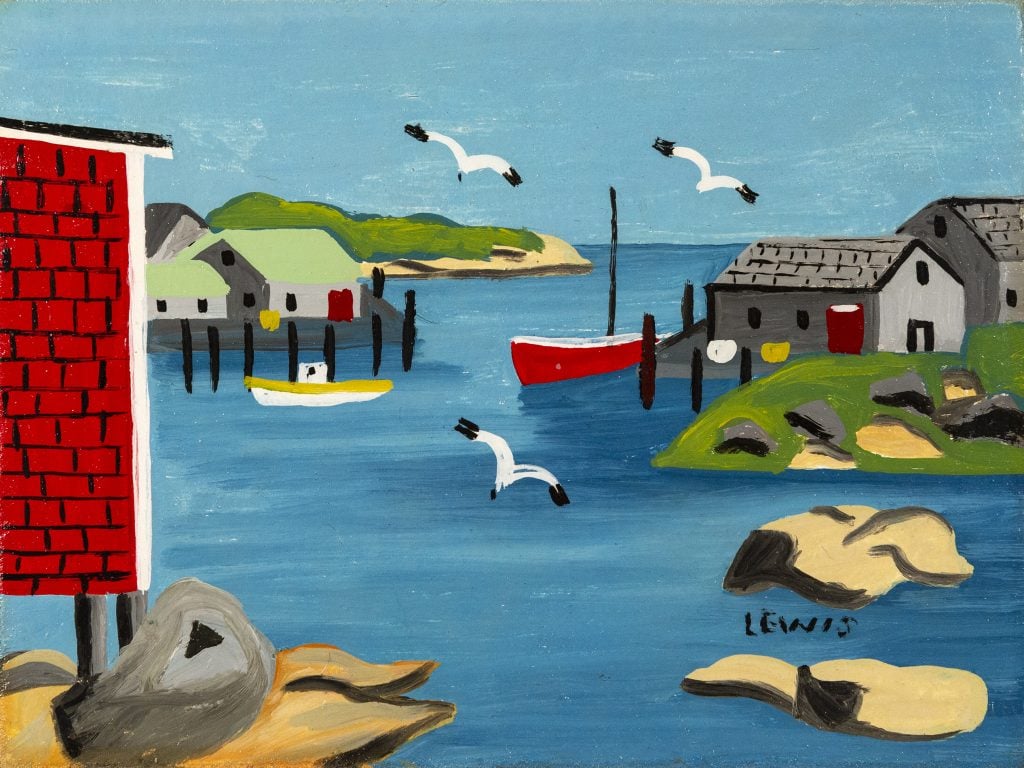
Maud Lewis, Sandy Cove with Red Clapboard (1955–1959). Courtesy of Oeno Gallery, Toronto.
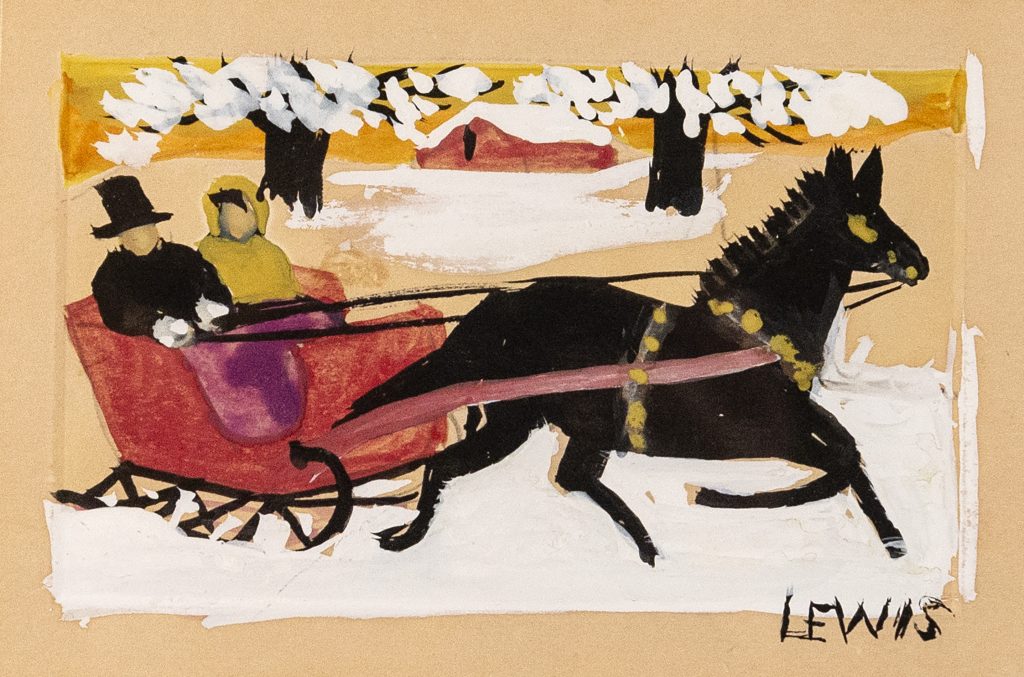
Maud Lewis, Sleigh Christmas Card (1950–1960). Courtesy of Oeno Gallery, Toronto.
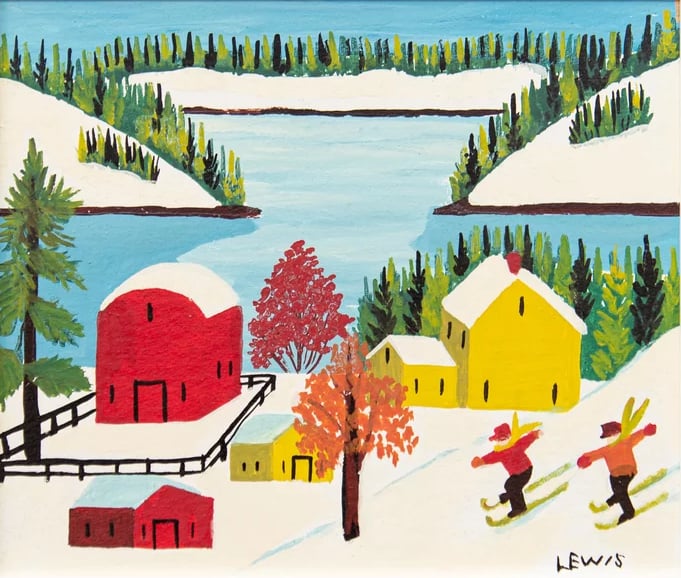
Maud Lewis, Two Skiers (ca. 1950). Courtesy of Oeno Gallery, Toronto.
Learn more about Maude Lewis with Oeno Gallery here.